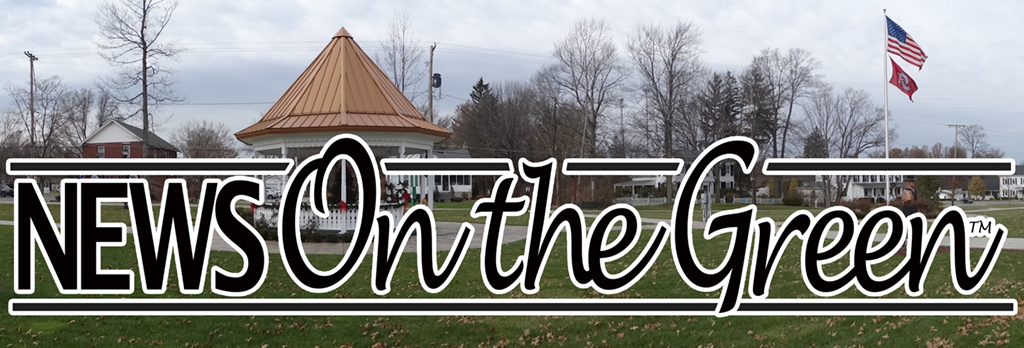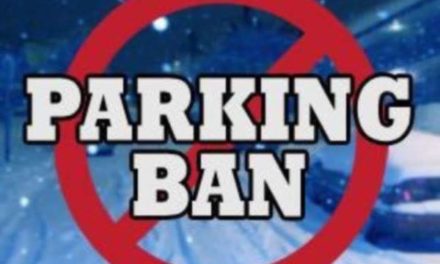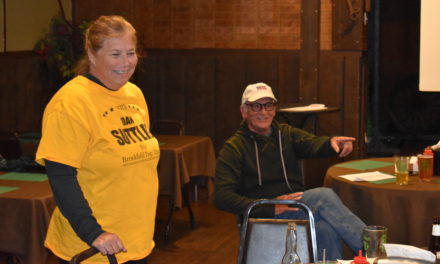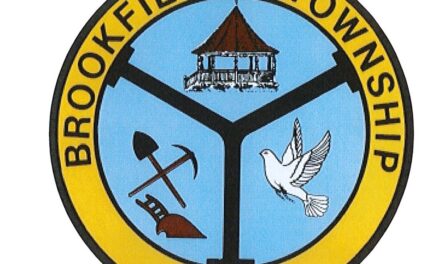Mark Ferrara, a Brookfield trustee only since January, has spearheaded an examination of the township’s roads and pushed for a plan to upgrade them. That work led to the trustees placing a 3.5-mill, continuous levy referendum on the November ballot.
“We’re at the point where we don’t have the luxury to do nothing,” Ferrara said. “No one likes paying more, but I see it as an investment. We’re investing in the community.”
“If we do nothing, it’s just gonna continue to spiral down,” he said of the condition of township roads. “This is an effort to prevent that from happening.”
Trustee Dan Suttles said he is “tired of being taxed,” and noted that in a period of high gas prices and inflation, “These aren’t the best of times to put on a levy. You don’t always get to pick when it’s a good time to do it. I don’t know if there’s ever good times to ask people for more money. I believe we’re justified that we need it.”
The money would be used to hire contractors to pave roads, officials said. Road Supt. Jaime Fredenburg noted that there is no way to legally set the money aside for that purpose. The trustees “are the ones that have to watch that,” he said. “That’s what the plan is, just to use it for paving and roads.”
A 3.5-mill road levy would initially bring in about $490,000 a year, officials said. With that money, Fredenburg said he could pave every township road once every 20 years, and perform some sort of maintenance – crack sealing, tarring and chipping – every five to seven years. The money also would be used to upgrade unaccepted roads – those deemed open for public travel, but which are not maintained by the township – to make them accepted for township maintenance.
The road department, which also is responsible for for the township park, the township cemetery and a myriad of other tasks that arise periodically, is funded by:
- Motor vehicle license plate tax, which drivers pay when they get or renew their licenses. This source is expected to bring in about $102,000 this year.
- Gas tax fund, which the state shares with local municipalities, $216,000.
- Road and bridge fund, from the township’s inside millage, $374,000.
That money pays for salaries and benefits, equipment purchases, materials and supplies, tools and all the costs associated with employment. However, whenever Fredenburg wants to undertake a paving project, he asks the trustees for money out of the general fund, the money the trustees use for administration, code enforcement, park maintenance, and their own and the fiscal officer’s salaries and benefits.
Typically, the trustees allocate $40,000 to $50,000 a year from the general fund, officials said.
 It is difficult for the road crew to take on paving projects because of the expense of materials, the lack of manpower and the age of the equipment, Fredenburg said. They have done smaller projects, such as skin patching, where they pave over bad sections with a thin coat of asphalt, without milling or repairing the underlying pavement beforehand, he said.
It is difficult for the road crew to take on paving projects because of the expense of materials, the lack of manpower and the age of the equipment, Fredenburg said. They have done smaller projects, such as skin patching, where they pave over bad sections with a thin coat of asphalt, without milling or repairing the underlying pavement beforehand, he said.
Most of the paving projects the township takes on come from Issue 1 grants. Issue 1 is a state, bond-funded program, in which the Ohio Public Works Commission provides grants for paving projects. The program is competitive and requires a local match. The more money the township can put into the match, the more money it can get from Issue 1.
“If we had money, we could get a lot more money through the grants,” Fredenburg said.
So, a local $490,000 investment might result in a $1.5 million paving project, he said.
Fredenburg also noted that keeping the road department out of the general fund allows the trustees to spend that money elsewhere.
“When your road department is financially stable, it frees up a lot more money for other things, like community activities, baseball, parks, the green,” he said. “It gives the trustees a little more flexibility.”
That’s important for the trustees, who have seen the general fund shrink from $441,000 in 2018 to $313,000 this year.
“We can’t keep going to the general fund to help the roads,” Ferrara said.
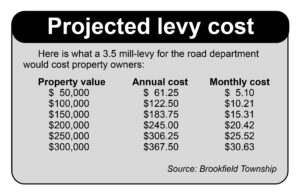 Fredenburg has drafted a 20-year plan that will be made public when it is approved by the trustees, he said. The plan would show when roads will be paved.
Fredenburg has drafted a 20-year plan that will be made public when it is approved by the trustees, he said. The plan would show when roads will be paved.
“I want the community to have as much information as possible,” Suttles said.
The plan would not include U.S. roads such as Route 62, state roads such as routes 82 and 7, or county roads such as Warren Sharon Road, Bedford Road and Broadway Avenue.
While the trustees are not allowed by state law to actively campaign for the levy, Ferrara said, they can share information and make themselves available to explain why the levy is needed and answer questions. They started that effort by holding Talk With a Trustee at the July 23 craft show on the green.
“We’re trying to educate our constituents and have meetings and being open and creating dialogue so you know the plight we’re in,” Ferrara said.
“We have a lot of work to do and we need to discuss and get out and inform the public – that’s our duty,” Suttles said. “If we do that, I think we’ll pass our levy. We’ll convince people that it’s for the betterment of the community, whether you live on a township road or not.”
“Three and a half mills is a big levy, but it’s what we need to get the work done,” he said.
